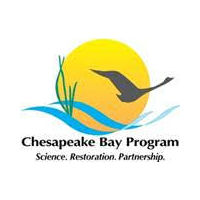
The Bay Barometer: Health and Restoration in the Chesapeake Bay Watershed 2016 – 2017 is a science-based snapshot of the nation’s largest estuary that features data and information gathered by the Bay Program’s many partners. It notes a continued improvement in the health of the Chesapeake Bay: a positive sign that restoration efforts are working.
The resiliency of the Chesapeake Bay is revealed by the 20 indicators of environmental health, restoration and stewardship in the Bay Barometer. Experts observed positive trends in many of the indicators that were updated in 2016 and 2017, including:
- Underwater Grasses (Submerged Aquatic Vegetation, or SAV): Fifty-three percent of the outcome to achieve and sustain 185,000 acres of underwater grasses in the Bay—including 130,000 acres by 2025—has been met.
- Blue Crab Abundance: Over 100 percent of the outcome to maintain a sustainable target of 215 million adult female blue crabs has been achieved.
- Fish Passage: Over 100 percent of the outcome to restore historical fish migration routes by opening 1,000 additional stream miles to fish passage has been achieved.
- Estimated Pollution Reduced: Computer simulations show that pollution controls put in place in the Chesapeake Bay watershed between 2009 and 2016 lowered nitrogen loads by nine percent, phosphorus loads by 20 percent and sediment loads by nine percent. Pollution-reducing practices are in place to achieve 33 percent of the nitrogen reductions, 81 percent of the phosphorus reductions and 57 percent of the sediment reductions necessary to attain clean water standards.
- Water Quality Standards Achieved: Forty percent of the Chesapeake Bay and its tidal tributaries met water quality standards between 2014 and 2016, the highest amount ever recorded.
This year, data was assessed for the first time for three new indicators: Environmental Literacy and Planning, Student Meaningful Watershed Educational Experiences and Citizen Stewardship.
Watershed residents play a significant role in the restoration and protection of the Chesapeake Bay. This year, the partnership acknowledged the actions that watershed residents are taking to protect clean water and restore environmental health—including how much of the region has volunteered or spoken out on behalf of the environment—through the first ever Citizen Stewardship Index and through the recognition of the efforts of volunteers and citizen scientists to collect monitoring data from the many local waterways that wind through the Chesapeake Bay watershed. Through the Citizen Monitoring Cooperative, these groups and individuals can obtain technical support and help in developing their monitoring programs and add their data to a central location for others to use.
Facts
The Chesapeake Bay Program is a regional partnership of federal, state and local governments, academic institutions and non-governmental organizations that leads and directs the restoration and protection of the Chesapeake Bay. Guided by the Chesapeake Bay Watershed Agreement, Chesapeake Bay Program partners use ten interrelated goals and 31 outcomes to collectively advance the protection and restoration of the Chesapeake Bay ecosystem and its watershed.
The majority of these outcomes have related indicators, goals and deadlines that allow the Chesapeake Bay Program to track progress toward environmental restoration, protection and stewardship. Data and information used to track this progress come from a range of trusted sources, including government agencies, academic institutions, nongovernmental organizations and direct demographic and behavior surveys.
Issues
Determining the health of the Chesapeake Bay is as complex as the ecosystem itself. Across the watershed, rainfall, temperature and other conditions vary from month to month and year to year, which impact the surrounding environment.
Thanks to the efforts of local governments, private landowners and watershed residents, nutrient and sediment pollution entering local waterways and the Bay have declined, but agricultural and urban and suburban runoff continue to be a challenge. As the population of the watershed grows, urban and suburban development pressures can fragment habitat, harden shorelines, increase impervious surfaces and push pollution into rivers and streams.
However, these land use pressures can also open opportunities for dialogue and decision-making to protect ecologically and culturally vulnerable lands or mitigate damage when impacts are impossible to avoid. Continued engagement and policy with private landowners, local governments and watershed residents are key for restoration successes.
Importance
The data found in the Bay Barometer reflect the health of the Chesapeake Bay watershed over the course of many years, and in some cases, decades. The publication offers a snapshot of the best available information from 2016 and 2017 on ecological health and our efforts to protect and restore the nation’s largest estuary.










